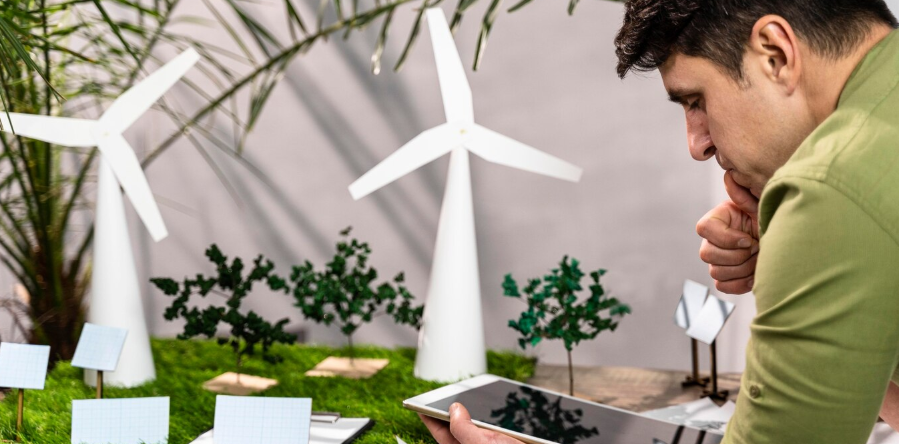The Internet of Things (IoT) has rapidly transformed from a futuristic concept into a reality that connects devices, systems, and people in ways never before imagined. Through the integration of smart devices and sensors, IoT enables everyday objects to collect, exchange, and analyze data, leading to smarter decisions, improved efficiencies, and enhanced convenience in numerous aspects of our lives.
IoT has had a significant impact on industries such as healthcare, agriculture, manufacturing, transportation, and home automation. But what does the future hold for this transformative technology? In this article, we’ll explore the power of IoT, its benefits, and its potential to shape the world we live in.
What is the Internet of Things (IoT)?
The Internet of Things refers to the network of physical devices that are embedded with sensors, software, and other technologies to connect and exchange data with other devices over the internet. These devices can range from everyday household objects, such as refrigerators and thermostats, to complex industrial machines used in manufacturing and agriculture.
At its core, IoT is about connecting the physical world to the digital world, enabling these connected devices to communicate and perform tasks autonomously or with minimal human intervention.
How IoT is Changing the World
1. Smart Homes: Transforming Everyday Living
One of the most visible impacts of IoT is in the world of smart homes. By connecting everyday household devices to the internet, IoT enables users to automate tasks, enhance security, and create more energy-efficient living spaces.
- Smart Thermostats: Devices like Nest allow homeowners to control the temperature of their homes remotely, adjust settings based on usage patterns, and even optimize heating and cooling to reduce energy consumption.
- Smart Lighting: IoT-powered lighting systems, such as Philips Hue, allow users to control the brightness and color of their lights from anywhere via smartphone apps. These systems can also automate lighting based on routines, saving energy and enhancing convenience.
- Security and Surveillance: Smart cameras and doorbell systems like Ring provide real-time video feeds and alerts, enhancing home security. Some systems even allow remote monitoring of activities through mobile apps, providing peace of mind to homeowners.
2. Healthcare: Improving Patient Care and Monitoring
IoT is having a profound effect on the healthcare industry by enabling remote monitoring, improving patient care, and providing real-time data to both patients and doctors.
- Wearable Health Devices: Fitness trackers and smartwatches like the Apple Watch are equipped with sensors that monitor vital signs such as heart rate, blood pressure, and even blood oxygen levels. These devices can alert users or healthcare providers to potential health issues, leading to quicker interventions and preventive care.
- Remote Patient Monitoring: IoT-enabled medical devices allow doctors to remotely monitor patients with chronic conditions or those recovering from surgery. Devices like smart insulin pumps for diabetes or wearable ECG monitors provide continuous data that can help doctors track patients’ health remotely, leading to improved care and reduced hospital visits.
- Hospital Management: IoT is also being used to streamline hospital operations, such as tracking medical equipment, managing inventories, and even locating patients and staff within hospital premises, improving the efficiency of healthcare facilities.
3. Smart Cities: Creating Sustainable and Connected Urban Environments
The rise of IoT is driving the development of smart cities, which leverage interconnected devices and sensors to manage urban infrastructure more efficiently, enhance public services, and improve the quality of life for residents.
- Traffic Management: IoT sensors can monitor traffic flow, detect congestion, and provide real-time traffic updates. This data can be used to optimize traffic light timings, reduce road congestion, and improve public transportation routes, making cities more efficient and reducing carbon footprints.
- Waste Management: Smart waste bins embedded with sensors can detect when they are full and send data to waste management systems. This enables cities to optimize collection schedules, reduce fuel consumption, and maintain cleaner streets.
- Environmental Monitoring: IoT-enabled sensors can track air quality, temperature, humidity, and other environmental factors in real-time. This information can help governments and organizations take action to combat pollution, manage resources, and make cities more sustainable.
4. Manufacturing: Enhancing Productivity and Efficiency
The industrial sector is leveraging IoT to revolutionize manufacturing processes, improve supply chains, and boost productivity through Industrial IoT (IIoT).
- Predictive Maintenance: IoT-enabled sensors in industrial machinery can monitor equipment health and detect signs of wear or malfunction before they lead to costly breakdowns. Predictive maintenance reduces downtime and extends the lifespan of equipment, saving businesses both time and money.
- Smart Factories: By connecting machines and devices on the factory floor, manufacturers can automate processes, optimize production lines, and collect data to improve operational efficiency. IoT-driven solutions also help businesses track inventory levels in real-time, enabling just-in-time manufacturing and reducing waste.
- Supply Chain Optimization: IoT devices can track shipments in real-time, providing valuable data on the location, condition, and delivery status of goods. This data helps businesses improve inventory management, reduce delays, and optimize their entire supply chain.
5. Agriculture: Improving Efficiency and Sustainability
In agriculture, IoT is being used to optimize farming practices, improve crop yields, and promote sustainable agriculture.
- Precision Farming: IoT devices such as soil moisture sensors, weather monitoring systems, and drones allow farmers to gather real-time data about their fields. This enables more accurate irrigation, fertilization, and pest management, reducing waste and increasing crop productivity.
- Livestock Monitoring: IoT sensors can be used to track the health and behavior of livestock. Wearable devices can monitor vital signs, track movements, and even detect signs of illness, allowing farmers to intervene before conditions worsen.
- Resource Management: IoT-powered systems can help farmers better manage water and energy resources, ensuring that crops receive the optimal amount of irrigation and reducing the consumption of energy and water.
6. Retail: Enhancing Customer Experiences
Retailers are increasingly adopting IoT technologies to enhance customer experiences, optimize inventory management, and personalize marketing efforts.
- Smart Shelves: IoT-enabled smart shelves can monitor stock levels in real-time and alert store managers when items need to be restocked. This ensures that popular products are always available, improving customer satisfaction.
- Personalized Shopping: Retailers are using IoT sensors to track customer behavior in-store and gather data on their preferences. This data can be used to create personalized shopping experiences, offer targeted promotions, and improve customer engagement.
- Supply Chain Transparency: IoT technology is also used to track products throughout the supply chain, from manufacturers to retailers. This enhances product traceability, reduces counterfeiting, and provides customers with greater transparency about the origins and quality of the goods they purchase.
The Challenges of IoT
While IoT has the potential to revolutionize industries and improve daily life, there are also challenges that need to be addressed for its widespread adoption.
1. Security and Privacy
With millions of devices connected to the internet, IoT creates a vast network of data points that can be vulnerable to cyberattacks. Securing IoT devices, networks, and data is paramount to prevent unauthorized access, data breaches, and potential misuse of personal information. Manufacturers must build robust security measures into IoT devices, and consumers should be vigilant in protecting their connected devices.
2. Data Management and Interoperability
IoT generates massive amounts of data, and managing this data effectively is a significant challenge. The interoperability of different IoT devices and platforms is another issue. For IoT to reach its full potential, devices from various manufacturers must communicate seamlessly, and standardized protocols need to be established.
3. Cost and Infrastructure
Building and maintaining the infrastructure needed to support IoT on a large scale can be expensive. Companies need to invest in upgrading their networks, ensuring reliable internet connectivity, and integrating IoT solutions into existing systems. While the cost of IoT devices has decreased over the years, widespread implementation still requires substantial investment.
The Future of IoT
The future of IoT is exciting, with several trends and innovations on the horizon:
- 5G Connectivity: The rollout of 5G networks will significantly enhance IoT capabilities by offering faster, more reliable internet connections. This will enable real-time communication between devices, expanding the possibilities for IoT in industries like healthcare, manufacturing, and transportation.
- AI Integration: The integration of artificial intelligence and IoT will lead to even more intelligent, autonomous devices that can learn from data and make decisions without human intervention. AI-powered IoT solutions will optimize operations, improve decision-making, and increase automation across industries.
- Edge Computing: With the increase in IoT devices, edge computing will become crucial. Instead of sending all data to the cloud for processing, edge computing allows devices to process data locally, reducing latency and improving real-time decision-making.
Conclusion
The Internet of Things is a transformative technology that is revolutionizing industries and reshaping our daily lives. From smart homes and healthcare to manufacturing and agriculture, IoT is enabling a more connected, efficient, and sustainable world. As technology continues to evolve, the potential for IoT to drive innovation, improve operational efficiency, and enhance customer experiences will only grow. However, to fully realize the power of IoT, addressing challenges like security, data management, and interoperability will be essential. The future of IoT is bright, and it promises to unlock new opportunities that will shape the world for years to come.


